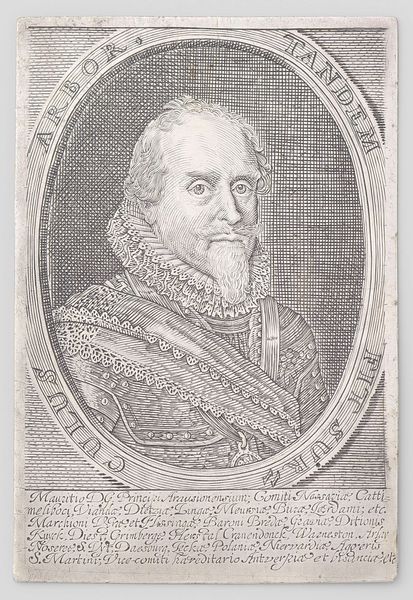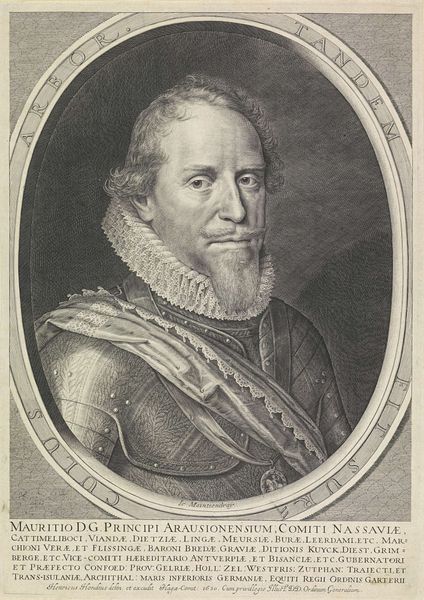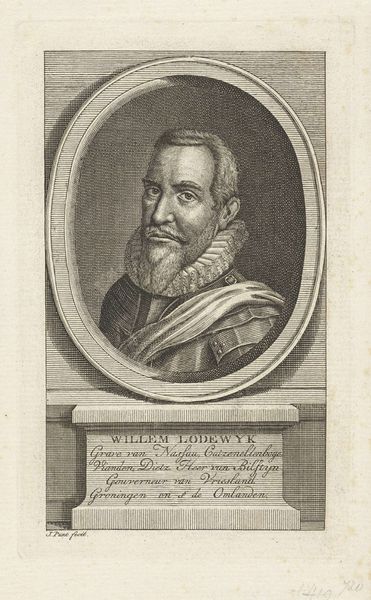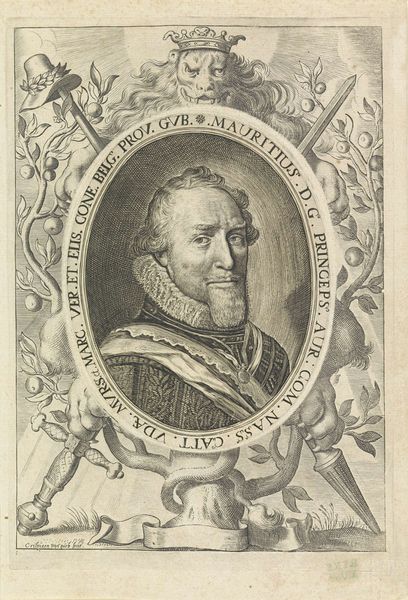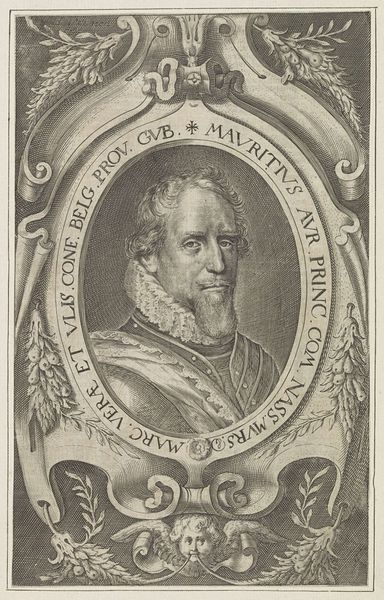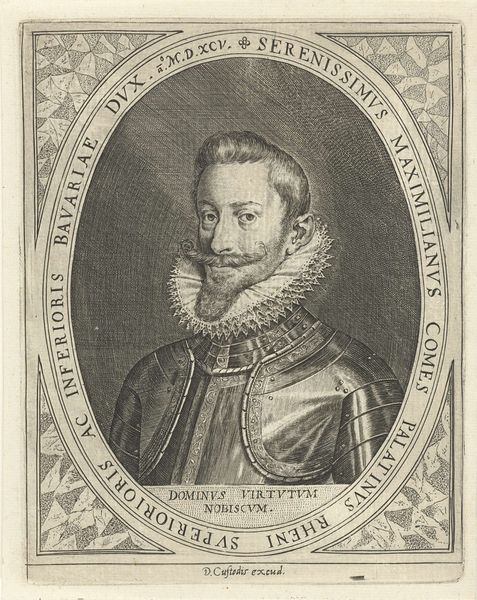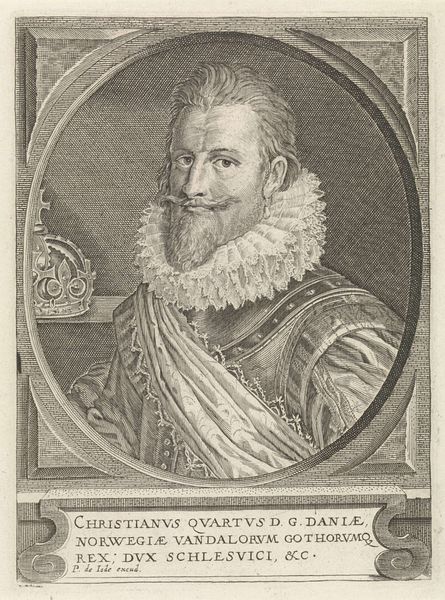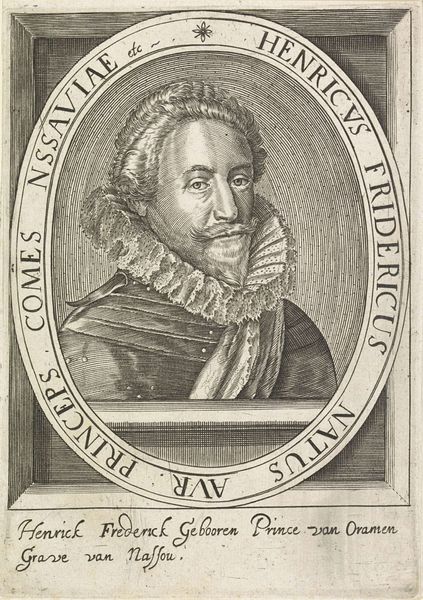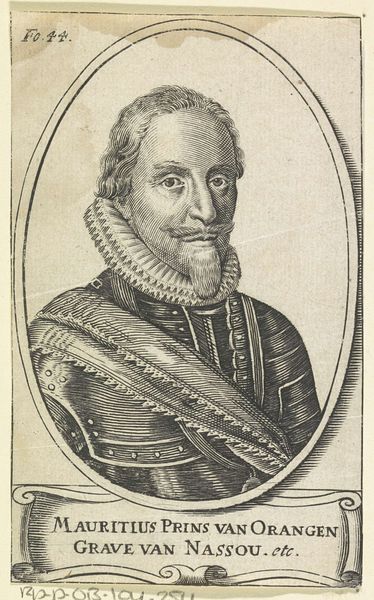
print, metal, engraving
#
portrait
#
pencil drawn
#
baroque
# print
#
metal
#
old engraving style
#
portrait reference
#
pencil drawing
#
portrait drawing
#
engraving
Dimensions: height 76 mm, width 57 mm
Copyright: Rijks Museum: Open Domain
Editor: Here we have Crispijn van den Queborn’s “Portret van Maurits, prins van Oranje,” from 1622, a print made with metal engraving. I’m immediately struck by the detail achievable with this medium. What sociopolitical perspectives might we bring to a portrait of Prince Maurits? Curator: Given Maurits' position within a powerful lineage, the House of Orange-Nassau, we must look at the work through a lens of power, inheritance, and the construction of identity within the ruling class. How might this image function as a form of propaganda, solidifying his image? Editor: Propaganda, certainly, given his prominent stance! Do the elements surrounding his face—the ornate ruff and the text—play into the image? Curator: Absolutely. Consider the text encircling Maurits. It doesn't simply name him; it ascribes titles, lands, and divine favor. Ask yourself: How does this deliberate framing reinforce notions of divinely ordained rule and inherited privilege, shaping public perception of Maurits and his authority? Editor: It feels like the artist sought to affirm Maurits's power rather than just portray him. And the lack of individual expression perhaps points to an almost manufactured persona. Curator: Precisely! In portraits of powerful men during that time, capturing an individual likeness sometimes took a backseat to portraying authority and stature. What do you make of the deliberate act of idealization during this period, and who benefitted from this calculated act? Editor: So much to think about concerning the way power shapes representation! This makes me consider not just who is portrayed but who *gets* to be portrayed. Curator: Indeed! By delving into historical and social contexts, we uncover deeper significance, interrogating power, identity, and representation itself.
Comments
No comments
Be the first to comment and join the conversation on the ultimate creative platform.
